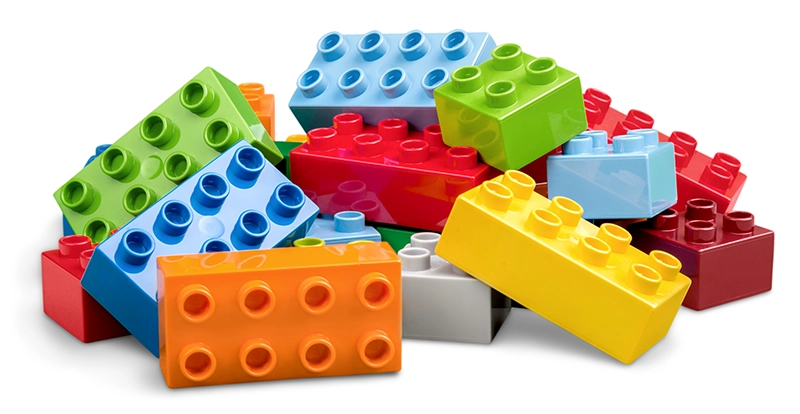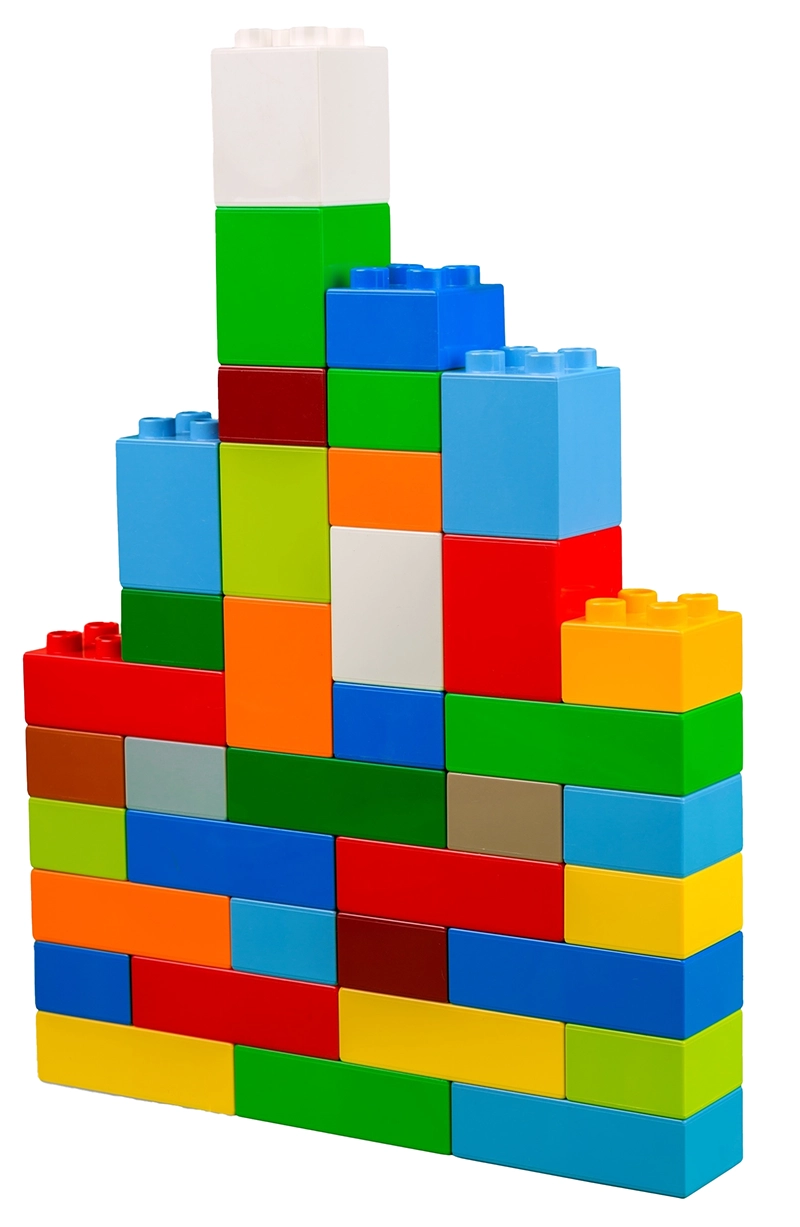Some O&P cases don’t have a solution that’s a textbook lookup or an internet search away. They don’t have a ready-made component that will magically fill all the patient’s needs. The toughest cases, experts say, require creativity and an out-of-the box approach.
 That kind of thinking was highlighted during a panel titled “Challenging Pediatrics Prosthetics Cases” at this year’s Academy Annual Meeting & Scientific Symposium. The five pediatric specialists each presented a unique case and discussed how they came up with solutions for their patients. The cases they presented included popliteal pterygium syndrome (PPS), proximal femoral focal deficiency (PFFD), and fibular hemimelia, and all included congenital limb difference with various differences in upper and lower limbs. Each case included active kids willing to try just about anything and nervous caregivers afraid of making the wrong decision.
That kind of thinking was highlighted during a panel titled “Challenging Pediatrics Prosthetics Cases” at this year’s Academy Annual Meeting & Scientific Symposium. The five pediatric specialists each presented a unique case and discussed how they came up with solutions for their patients. The cases they presented included popliteal pterygium syndrome (PPS), proximal femoral focal deficiency (PFFD), and fibular hemimelia, and all included congenital limb difference with various differences in upper and lower limbs. Each case included active kids willing to try just about anything and nervous caregivers afraid of making the wrong decision.
The cases were so specialized and each patient so different that the clinicians had to depend on their experience, the knowledge of others, and their own creativity to get the results they wanted.
“Many of the solutions we have to come up with are not in the textbook,” says Jessica Smit, CPO, Shirley Ryan AbilityLab, Illinois. “You have to be willing to be innovative…be willing to change routes and try something new.”
Michelle Hall, MS, CPO, FAAOP(D), lead prosthetist and residency director, Gillette Children’s, Minnesota, organized the panel and moderated it. She wanted other clinicians to be aware of challenging cases like these and, instead of being overwhelmed, learn how to break down the issues to come up with solutions.
“We take those hard problems and make them smaller,” she says. “Lots of small problems are easier to solve than one big problem.”
While their cases were very different, the presenters had many similarities in their advice for treating complicated pediatric cases.
Work Will Be Re-done (Again and Again)
It’s the nature of pediatrics that patients will go through multiple devices. They will outgrow what they have, and they will play rough and break things. That’s good, says Don Cummings, CP/L, director of prosthetics, Scottish Rite for Children, Texas. The underlying philosophy at Scottish Rite is to give children back their childhoods, he says.
“We know that they will tear their devices up and are kind of proud when they do because that means they are being kids and aren’t being held back by their amputation.”
Even when ambulation is difficult, kids will find a way to make their devices work for them, and then will probably find a way to break them.
“I joke that I can strap a two-by-four on a leg and if they want to run, they will run,” says Richard Welling Jr., MSPO, CPO, lead prosthetist in the limb deficiency team in the limb difference program, Children’s Healthcare of Atlanta. “They just want to be treated like other kids, and sometimes that’s challenging. One of our golden rules is that kids break everything.”
When it comes to challenging pediatric cases, the rule of many devices is multiplied, the experts say.
“In 90 percent of cases, we do iteration one, and it works,” says Hall. “Sometimes in these more complicated cases, you get to iteration two or ten depending on how challenging it is.”

 Challenging cases mean that clinicians are trying to strike a balance between multiple issues, and sometimes it can take a few iterations to figure out what that balance is. The practitioner may have to go back to the drawing board if the patient grows in unexpected ways or has a corrective surgery.
Challenging cases mean that clinicians are trying to strike a balance between multiple issues, and sometimes it can take a few iterations to figure out what that balance is. The practitioner may have to go back to the drawing board if the patient grows in unexpected ways or has a corrective surgery.
Smit presented about a three-year-old for whom she made five to six iterations of a socket design before she was able to find a compromise between the cosmesis the family wanted and the functionality her patient needed. That’s just part of the process, she says. The good news is that it can often help establish better relationships with the patients and their families.
“You see pediatric cases a lot more frequently,” she says. “It’s something I enjoy because I can get to know them as they grow.”
Creating Components
Tiny bodies, unique limb differences, curved bones, and hypoplastic appendages all make it difficult, if not impossible, to find the perfect, ready-made component in complicated pediatric cases.
“In pediatrics, there’s a general limitation of components,” Smit says. “This is for upper and lower extremities, but in the upper extremity, which are already slightly more limited than lower extremity, when you get into a niche group like pediatrics the availability and options really reduce for them.”
The presenters described finding a creative solution when an out-of-the box one didn’t exist.
In the case Smit presented, she needed to create a ratchet elbow for a child who loved to push things, but it caused the elbow to rachet up too far and become useless. When adding locks proved to be impossible, the team ended up using two parallel joints, which helped with control.
“I’m pretty proud of how my coworker and I were able to figure out something that would be functional for him even though it’s not available commercially,” Smit says.
A low-tech idea proved very effective for one patient who had upper-limb difference and was recovering from rotationplasty surgery, says Welling.
To help the patient get around, the physical therapist simply taped a cane to his walker. The little boy was soon up and hopping on his one foot.
“It sounds crazy; it sounds nuts,” Welling said in his presentation. “But in this case, it really was an adaptation that worked surprisingly well for him to get up and get moving.”
When a colleague switched out the cane with a 3D-printed socket and attachment, the boy was hopping even faster.
When Hall fitted the socket for a patient with hypoplastic toes, she misjudged just how fast his toes would grow. When they became pinched, she simply cut the front of his bivalve socket and added some extra padding.
“He liked it, and we continued with that design for several iterations,” she says. For that same patient, she made custom stubby feet by taking an adult stubby foot, scaling it down using the copier machine, and then custom fabricating that version for the 12-month-old.
Coming up with solutions like these is key to complicated cases, says Cummings. “Part of it is having to be creative. You have the basics from your education and residency and know whether things are indicated or not, and you know how to make the devices. But when you get into these challenging cases, it does really require a lot of creativity.”
Treating the Parents Too

 The joke in pediatric O&P is that clinicians are often treating the parents more than the patients, Welling says.
The joke in pediatric O&P is that clinicians are often treating the parents more than the patients, Welling says.
Parents are naturally nervous and protective of their children, and this is even more heightened when their child must be fit for a prosthetic device, Welling says. In cases of congenital limb deficiency, it’s common for the child’s mother to feel guilty because of her child’s differences.
“Mom can’t help that, even if it’s completely not her fault,” he says. “She’s still going to feel that, and you have to help them process through that.”
In cases of a traumatic injury, clinicians are helping the families process the grief they have for the loss of the limb.
“And they have to go through that, and it’s a struggle,” he says. “You’ll have parents who want to get back to quote, unquote, normal and have to remind them that normal is gone, and it’s all about our new normal and finding out what that is.”
Parents can be even more nervous in cases where the medical team suggests a surgery that will permanently alter the child’s body. Even if the team feels the surgery will lead to the best outcomes for the child, it can be a wrenching decision for parents.
“It’s easier for a child to adapt to an amputation the earlier it’s done, but you also have to understand that it’s a big decision, and the parents sometimes worry that later that their child may be angry and blame them. You have to put yourself in their shoes, and give them the time they need to work it out in their own way,” says Cummings.
In many pediatric cases, the clinician has gotten to know the family well through frequent visits, and that built-up trust can help assure the family that they are making the best decision for their child, says Todd DeWees, MHA, CPO, manager of orthotics and prosthetics, Shriners Children’s Hospital, Oregon.
“The benefit of seeing them repeatedly is that if I have done my job right and have built up trust, they are often willing to go along with my suggestions,” DeWees says.
There are going to be times though that the family will make a decision that is not recommended by their medical team, Cummings says. In these cases, patience and understanding is needed.
“We honor their decision and continue to support them,” Cummings says.
Asking for Help
The presenters all work alongside the patient’s physicians and physical and occupational therapists. Aside from that help, they say they also often rely on other clinicians to talk through their cases and brainstorm solutions. A practitioner’s ego shouldn’t get in the way of helping his or her patient, DeWees says.
“With these more complex patients, a lot of practitioners are reluctant to reach out to someone with more experience and pick their brain about how to approach this, and that’s to the detriment of the practitioner and the patient,” says DeWees. “Nobody, nobody comes into this field knowing everything, and nobody leaves the field knowing everything…. It’s important to be able to admit that to yourself and be willing to reach out and ask, ‘What are the pitfalls?’ ‘What are the risks and how do I fix them, so they have a successful outcome?’ Because you can’t do this looking at a textbook.”
Sometimes, Cummings says, practitioners may face a similar challenge, and most practitioners are always willing to help.
“You don’t have to reinvent the wheel.”
Case Summary 1
Cummings had a particularly challenging case while treating a boy with PPS. The rare condition occurs when a thick subcutaneous fibrous band creates a webbing between the flexor aspects of the joints. The band limits growth and creates worsening contractures over time. The patient also had a right cleft foot and congenital scoliosis.

 With cases like these, Cummings says, creativity is key. No textbook will teach a clinician how to treat this exact type of patient because no other patient exactly like this exists.
With cases like these, Cummings says, creativity is key. No textbook will teach a clinician how to treat this exact type of patient because no other patient exactly like this exists.
The patient, who was very active, experienced a series of injuries. He fell and ruptured his quadriceps tendon and damaged both patellas. Each time after surgery and casting, his pterygium got worse. He was walking with a crouched gait and a center of gravity “way out over the foot,” Cummings said in his presentation.
The family waited for a bit to make the decision about whether to have the child undergo knee disarticulation surgery.
“Unfortunately, he progressed more and needed the amputation,” Cummings says.
The surgery helped the boy’s lower-leg contractures, but he still had 40- to 50-degree hip flexion contractures, and Cummings had the challenge of creating a stable alignment that worked with the patient’s crouched gait.
To help see the problem better, Cummings superimposed x-rays on top of a line drawing of the device.
“I was trying to get the foot and whole system aligned so that his weight line fell appropriately over the foot,” Cummings said during the presentation. The solution included a pediatric hip pylon attached to the foot and a single axis knee mounted in that crouched position. That knee meant the patient could unlock when he needed to sit and swing it underneath him.
Due to the hip flexion contractures the patient also relies on forearm crutches for walking longer distances.
Cummings isn’t sure what changes may be needed as the boy grows. He’s not sure a microprocessor knee would function at that angled position. When the patient becomes an adult, he’ll have to find a clinician who has the expertise to treat his complicated needs.
“We’re just hoping that he progresses in the long term,” Cummings says. “There’s a lot of stuff going on, but he’s a determined young man.”
Case Summary 2
 DeWees had a clear goal for his patient with PFFD: help reduce his fractures.
DeWees had a clear goal for his patient with PFFD: help reduce his fractures.
DeWees has been seeing the patient, who has a 3.5cm left femur, for about 12 years. The diagnosis of PFFD means he has no structural hip joint; he also has midfoot structural deformity on the left side.
DeWees met the then four-year-old patient after a rotationplasty procedure. However, the structural deformity of the foot meant the primary movement of the ankle, now knee joint, was inversion and eversion.
The patient is a very active kid who lives on a farm, and his activity level, combined with his overall bone health and alignment issues make him prone to fractures—he had six in nine years. As surgeons repaired the bones, they moved from rods, which helped share the loads, to plates that helped fix the fracture, but also weakened the bone.
“It just spiraled,” DeWees says.
The key to coming up with the solution came after DeWees had a conversation with the patient’s mother. All the fractures except one had occurred after a fall and twist. The mother told him that the other fracture happened when his sister lifted him up while accidentally standing on his foot, which caused the fracture by lifting and twisting. When he learned about that, he realized that it was the twisting motion that was the main cause for the fractures. His solution was to replace the patient’s prosthetic foot with a running bade.
“If you use a running blade, when you twist it just pivots,” he says. “Since his fractures were from the twist, by reducing that resistance, he can’t generate that kind of torque necessary to snap the bone. So, if he were to fall, it allows him to not fracture.”
Since the implementation of the running blade six years ago, the patient hasn’t had a fracture. He also loves the bounce of the running blade.
DeWees has a video of his patient walking with his running blade. He isn’t walking perfectly; he has a Trendelenburg gait that he will probably always have, DeWees says.
“This isn’t some beauty story,” he said during the Academy presentation. “But he’s functional over the world he lives in. And that’s the ultimate goal for pediatrics.”
Case Summary 3
Welling’s patient has a congenital left arm deficiency, a right hand with three fingers, and PFFD on his right leg. The boy’s mother struggled to care for him alongside her other five children and eventually his grandmother became his primary caregiver.
The boy had a rotationplasty, creating a challenge to ambulation when he couldn’t bear weight on the leg while recovering.
This was where creativity came in, Welling says. A physical therapist taped a walker and a cane together.
For a longer-term solution, another prosthetist casted the child’s arm and 3D printed a socket and attachment for the walker. That gave the child even more stability and helped in terms of height, position, and angle.
The next creative challenge came when the boy wanted a left arm prosthesis to play catch. Residual tissue made it difficult to put the liner on, so eventually the team decided to make an internal polyethylene socket that fitted over the tissue up to about his elbow, allowing him to roll the liner over that socket. His device, which allowed for the extension of the residual tissue, ended up being an elbow disarticulation prosthesis that gave him a bulbous distal end he could pop into the arm and have good suspension.
The problem, the team soon realized, was that the boy had never used his rotator cuff muscles to hold his shoulder back. That meant when he tried to lift his arm, it ended up backward. He is working on that now in therapy.
“You’re going to come across these unique circumstances where these kids have just really different anatomies and different problems,” Welling said in his presentation. “Get creative and collaborate with your colleagues and get other opinions on what they’re doing because there’s some really great opportunities for these kids.”
Case Summary 4
When faced with a patient with quadruple failure of formation limb differences, Hall faced a tough decision: Where should her first focus be?

 The patient had a shortened right side wrist and knee disarticulations and on the left side had a partial hand and fibular hemimelia, says Hall.
The patient had a shortened right side wrist and knee disarticulations and on the left side had a partial hand and fibular hemimelia, says Hall.
The team wasn’t sure whether to follow the upper-limb adage of “fit when they sit” or the lower-limb advice to fit when the child can pull to stand. Would early ambulation be more likely if they focused on mobility or stability? When the patient was a year old, his parents decided they wanted him to stand and start to walk. They argued that their son was already using his upper limbs to manipulate things even without a hand, and they wanted to focus on his mobility.
With that in mind, the team decided to make his lower-limb prosthesis as stable as possible using a monolithic design (without a knee) on the knee disarticulation side. Covering the hypoplastic toes on his fibular hemimelia side required a bivalve patellar tendon bearing supracondylar socket. As he grew, the toes grew as well and became pinched. Hall ended up cutting off the front of the socket and added some extra padding to let the toes go through.
The orthopedist continually recommended osteotomy, foot ablation, and release of the hips to help with the patient’s contractures and fitting, but his parents refused. They eventually agreed to allow surgery to remove soft tissue to help with socket fit, and his hypoplastic toes were removed. His hip flexion contractures improved, but he still had a 25-degree knee flexion contracture because it was related to his bone issue.
For his upper-limb care, the patient was afraid of the prosthetic hand and refused it. He accepted a hook, which worked while he was sitting, but when he stood, he maxed out on the device’s range of motion because he had to use his upper limbs for balance.
After outgrowing the body-powered prosthesis, he hasn’t yet been interested in getting another one.
“So that was a big learning opportunity for me,” Hall said during her presentation. “I think he’ll do great once he’s big enough for a multiarticulating hand with a myoelectric design.”
For now, the patient can walk but won’t be able to run unless he has an osteotomy. That decision has been difficult for the parents, Hall says. They want him to have the best prothesis as an adult, but they also say they don’t want to augment his body without him deciding.
“It’s a catch-22,” she says. “I think parents are really worried about doing the wrong thing that might affect their child in the future and will get blamed for it.”
Case Summary 5
Smit had two young international patients with upper-limb congenital limb differences that she thought might have similar solutions. The experiences and the solutions have turned out to be very different.
 Smit specializes in upper-limb pediatric prosthetics. The international patients she sees tend to be complicated cases. One of her patients was a six-year-old boy with bilateral shoulder disarticulations who she treated with her colleague Robert Lipschutz, CPO. The patient had never used a prosthesis and used his feet for almost everything. With limited range of motion in his shoulders, the team decided to use force-sensing resistors to control his myoelectric hands. They decided on shoulders and elbows with passive friction. The biggest challenge was his elbow. The team started with a ratchet elbow, figuring he could use his knees or a table or chairs to knock them up and they wouldn’t extend down. This was great for just holding things. They soon found out how much young boys liked pushing things and realized that any sort of pushing movement would ratchet the elbows up and they wouldn’t be useful. The occupational therapist wanted them to add locks, which sounded simple, but was not. They ended up taking two joints and running them in parallel to get the advantage of both. It took a little machining and a lot of trial and error, but in the end, Smit was proud of the outcome.
Smit specializes in upper-limb pediatric prosthetics. The international patients she sees tend to be complicated cases. One of her patients was a six-year-old boy with bilateral shoulder disarticulations who she treated with her colleague Robert Lipschutz, CPO. The patient had never used a prosthesis and used his feet for almost everything. With limited range of motion in his shoulders, the team decided to use force-sensing resistors to control his myoelectric hands. They decided on shoulders and elbows with passive friction. The biggest challenge was his elbow. The team started with a ratchet elbow, figuring he could use his knees or a table or chairs to knock them up and they wouldn’t extend down. This was great for just holding things. They soon found out how much young boys liked pushing things and realized that any sort of pushing movement would ratchet the elbows up and they wouldn’t be useful. The occupational therapist wanted them to add locks, which sounded simple, but was not. They ended up taking two joints and running them in parallel to get the advantage of both. It took a little machining and a lot of trial and error, but in the end, Smit was proud of the outcome.
Her other patient, who she treated alongside her colleague Rachel Siegal, CPO, was a three-year-old boy with transhumeral-level congenital limb difference. His right limb was mid-length, but the left side was much shorter, and the humeral section was curved. He also wasn’t getting any movement or excursion on the left side. An x-ray showed that the curved humeral section lacked a humeral head, which affected function. Smit’s team wanted to focus on function on that side, which created an alignment causing the humerus to stick out. The boy’s family was worried about the cosmesis and kept asking her to straighten his arm, and a language barrier was an additional challenge to work through. The team tried five or six iterations of a socket design before they reached a compromise of function and cosmesis.
“The big challenge was the family dynamics and getting everyone on the same page and balancing expectations of cosmesis and function.”












-1.png)


